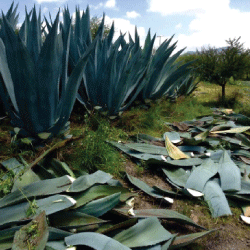Agave Power
ESSAY OF THE WEEK
A new agave-based agroforestry model in Mexico is helping small farmers while also capturing large amounts of carbon. | A new agave-based agroforestry model in Mexico is helping small farmers while also capturing large amounts of carbon. | Read the Full Article
In addition to our work in the U.S, OCA has a thriving project—Vía Orgánica—in Mexico. The project, which includes a regenerative teaching farm, is testing a potentially revolutionary climate-change solution.
In this week’s essay, Ronnie explains how small-scale farmers and ranchers, living in some of the most challenging climates and landscapes all over the world, could reforest, revegetate, rehydrate and recarbonize depleted soils—and sequester massive amounts of carbon, while raising food for their communities.
Modelo Zamarripa, an agroforestry and livestock-management system, originated in San Luis de la Paz, Mexico, and is now being implemented at Vía Orgánica. At the heart of the system is the agave plant—a plant that grows prolifically in some of the harshest climates in the world, but has been largely ignored, if not outright denigrated.
That’s about to change. And when it does, and the Modelo Zamarripa System is scaled up, millions of acres around the globe, including here in the southwest, could be turned into food-producing massive carbon sinks.
Read ‘This Revolutionary System Can Help Stop Global Warming’
SIGN UP for the Regeneration International newsletter
Make a tax-deductible donation to Regeneration International

